Comprisation "Magnum Opus"
Alchemy of Order
June, 2024

Director's Cut
We are ending our Alchemical Voyage here. And I will not leave you empty handed. In fact, I will go out on a limb and suggest a unique theory that may make some people unhappy. If you stumbled onto this page directly, it is the culmination of FIVE Other Parts.
Alchemy of the Renaissance was a SEARCH for "The Philosopher's Stone," the originating element of the Universe, something that could both transform any base metal into Gold and was also the "Elixer of Life."
The search was conducted as a series of "Chymistry Experiments" through the combining, heating, distilling, and otherwise PROCESSING material elements, in a certain order, inside an Alchemical lab. Contrast this to the similar search for mountains of gold in the fabled "Eldorado" or the "Fountain of Youth," both which required lengthy "Voyages of Discover" by ship.
A common interpretation is that Alchemy was a pseudo-science, destined to fail from the beginning. It did act as a stepping stone to modern chemistry and a few of the experiments worked out. But (it is assumed) all of the secrecy and symbolism was unnecessary and added nothing.
Spiritual Alchemy
Physical Alchemy may have been doomed to fail, but Spiritual Alchemy survies today. The true champion was Carl Jung. Jung makes note of the seeming contradiction between scientific progress and occult mysticism.

This is a rhetorical question. A great synopsis of the answer Jung proposes in Psychology and Alchemy comes from Wikipedia:
"The fundamental thesis Jung is advancing about the relationship between Alchemy and Psychology is that for pre-scientific humans there is not a sharp distinction between subject and object and thus this leads them to unconsciously project their own inner states onto external objects (especially objects that are mostly unknown to them), so a reflective analysis of alchemical symbols becomes revelatory about the unconscious psychic life of this time period."
— Wikipedia on "Psychology And Alchemy"
Jung's position is that the Alchemists were engaged in a Journey of Spiritual Transformation. The journey was driven by mystical symbology as old as ancient Egypt (e.g. Greek god Hermes & Egyptian god Thoth as sources of the Emerald Tablet). Followers of Jung's Spiritual Alchemy today still reference the ancient Four Stage Process Philosophy:
- nigredo — the blackening
- albedo — the whitening
- citrinitas — the yellowing
- rubedo — the reddening
If you get sucked down the rabbit hole of current Spiritual Alchemy you will also see Seven-Step and Twelve-Step variants. The 12 Steps follow the Zodiac, but Seven is slightly tricker. It starts with transformations matching the four Classic Elements: Calcination - Fire; Dissolution - Water; Separation - Air; Conjugation - Earth. The next three are Putrefaction, Distillation, and Coagulation. Actually these last 3 are adapted from the Four Stage Process: the Blackening, Whitening, and Reddening stages, with Yellow subsumed into either White or Red, since (as Jung points out) Spiritual Alchemists are really PROJECTING psychological transformations anyway, and they need the total to match the Seven-Sided Star somehow.
Physical Alchemy
If there is a single idea that links Medieval Alchemy with Jungian Spiritual Alchemy it is this Four Stage Process:

Newton's copied illustration of the "Ancient Chaos" calls this out, but in an occult way. Jung calls it out too, but only if you look into Jung. I have since discovered that older versions of the diagram, older than Newton's, also annotate the diagram with the Four Humors (and in the right color order).
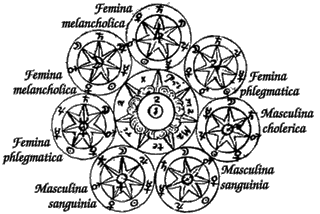
I found this key insight because of all symbology, combinations, mapping between planets and qualities and bodily humors; all of that points to these FOUR COLORS through the process of elimination. It's the only link that holds the otherwise complex arrangement of the "Ancient Chaos" diagram together. We are are reminded of our initial Newton Quote:

Magnum Opus
In alchemy, the Magnum Opus was the process of working with the "First Matter," through stages, to "create the Philosopher's stone." We have "Prima Materia" defined in the "Ancient Chaos" diagram above. But what are the stages the alchemist needs to apply? The Four Color Stages. What is the initial substance? The specifics will require experimentation. What is the desired result? Elixir of Life? Gold? Magnum Opus will reveal it's secret "to them who can understand."
A Challenger Appears
I am going to take a strong diversion from Jung's psychological interpretation of the "Ancient Chaos." I fully agree that Alchemy became the problem-space of projected archetypes, and the massive volume of imagery is a partial dictionary of the Collective Unconscious. But that doesn't explain where this particular theme originated. My simple explaination is The "Ancient Chaos" encodes an actual formula, possibly originating in Alexandria, Egypt circa 1000 BCE or before. And we will test the truth of that theory through historical words and deeds (not archeology).
"Know, all you seekers after this Art, that unless ye whiten, ye cannot make red, because the two natures are nothing other than red and white."
—Turba Philiosophorum, 900 AD
Professional Grade Alchemy
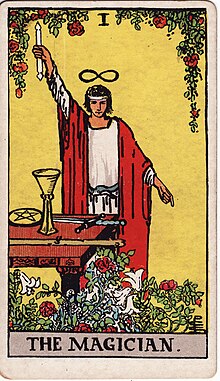
Some characterize Hennig Brand (1630 - 1710) as "the last Alchemist." Brand called himself Doctor and signed correspondence HENNIG BRAND M.D., despite a lack of medical training. He married well and his first wife's dowery allowed Brand to pursue Alchemy seriously in his own lab. After she died, he married into money again which allowed his studies to continue.
Brand was not on a quest for spiritual enlightenment. He was after gold and fortune. He was a Physical Alchemist. And in my opinion, he was the most successful of any pursuing the art, including Isaac Newton.
The Magnum Opus requires the correct starting material, "Prima Materia," before applying the Four Color Transformation. Based on conversations Brand had with other Alchemists it is most likely that he studied existing books on Alchemy, and in particular the "Alchimia Nova." The Alchimia Nova has illustrations of various furnace configurations and glassware for experimentation. Brand taught himself glassblowing in order to create his own lab equipment.
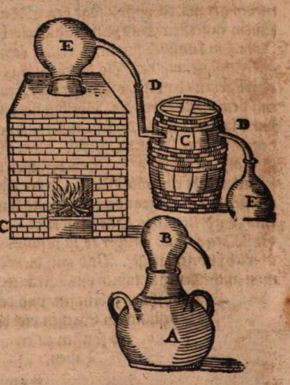
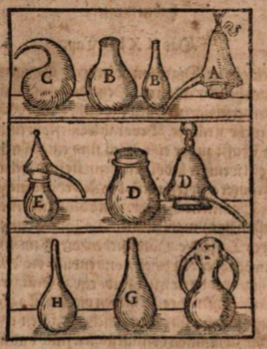
Illustration of Crucible (left) and Alembics (right) from Alchimia Nova, 1603
Of highest interest is the following (translated) description of the Prima Materia as Microcosmos:
"The old philosophers say that man is the small world: if he is the small world, he must also have everything in him that the other great world has in it... Is man therefore such a beginning and creature from which the stones and materials of the Alchemy has its origin... If one looks at human urine, it not only receives from nature the hardness and nature of a stone, but can also be given that hardness by art; can therefore very well be that from which alchemy comes and arises."
— Giovanni Battista Birelli, Alchimia Nova, 1603
Hennig Brand would have been fascinated with the idea of urine as the "Water of Life" from the "Microcosmos" of the human body. Aside from matching centuries of Occult descriptions, the gold colored liquid suggests it could leave residual gold if an adept distilled it properly. Gold!
The Blackening — Putrefaction

We can tell Brand was attempting an Alchemical Formula and wasn't merely experimenting with urine. First of all, he gathered HUMAN Urine, with an initial volume that must have been of dozens of gallons. (Reports say 1,500 gallons gathered from neighbors but I assume that was later after initial experiments were productive). Second, he waited for the urine to putrefy, become black, until it smelled and "produced worms." This is a horrendous start compared to using fresh urine, and starting with rotting human urine only makes sense in context of Microcosmos and "Blackening" within the Four Color Stages.
The Whitening — Purification

Most of Brand's process takes place at this stage of Purification. He first boiled the urine, reducing it to the consistency of Syrup. The result was placed in a "retort" which is an airtight container designed to separate contents under heat, but not lose matter in the way boiling evaporates away water. Retorts (or alembics) can be made of clay, metal or glass.
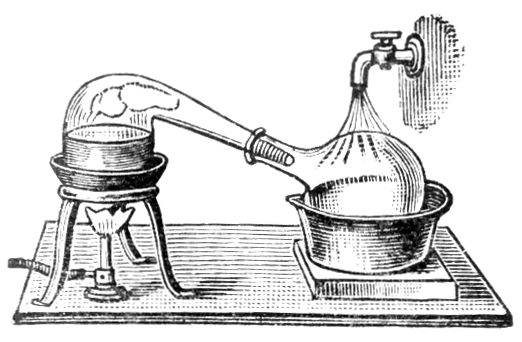
Alembic illustration 1910. Same concept as Retort
After application of high heat the syrup separates into salts, red liquid, and a black spongy material. The salt portion was removed and the remainder baked again at high heat until white fumes formed which were then cooled through water. Brand anticipated this cooled residual would be purified gold. Instead the result was a white waxy substance that glowed in the dark. Brand originally termed this discovery "cold fire" and later labeled it "Phosphorus." After decades of effort, in 1669, Brand discovered the chemical element white phosphorus, which otherwise doesn't exist anywhere on Earth!
The Yellowing — Dawning of the Solar Light

"Know, all you seekers after this Art, that unless ye whiten, ye cannot make red, because the two natures are nothing other than red and white."
—Turba Philiosophorum, 900 AD
Elemental phosphorus does in fact have two natures: White phosphorus molecules and red phosphorus molecules. They differ in the arrangement of the phosphorus atoms that naturally group together. So white phosphorus forms P4 in the same way that oxygen forms O2. Each phosphorus atom bonds with three other phosphorus atoms, forming a tetrahedron.
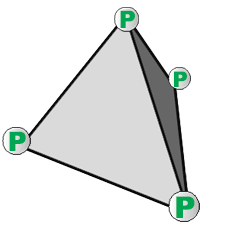
White phosphorus doesn't exist in nature because it is exceedingly volatile. When exposed to air, the glow is from slow oxidation. But above 30 °C (86 °F) the oxidation become rapid and white phosphorus self-ignites! When not oxidizing, white phosphorus naturally rearranges into red phosphorus. During transformation, a sample of mostly white phosphorus mixes with a bit of red phosphorus and appears yellow. Yellow phosphorus is considered "weapons-grade." YELLOWING of phosphorus is a natural state of transition, between WHITE and RED, subsequent to the purification of white phosphorus.
The Reddening — Return of the King

Red phosphorus P21 is much more stable, only self-igniting above 300 °C (572 °F) — high oven temperature. It forms naturally from chains of the tetrahedral P4 molecules when exposed to light or air. The REDDENING transformation of phosphorus occurs naturally, or can also be sped up though intentional heating to around 250 °C (482 °F).
Single atoms of phosphorus combine with other elements to form the molecules which are critical to life:
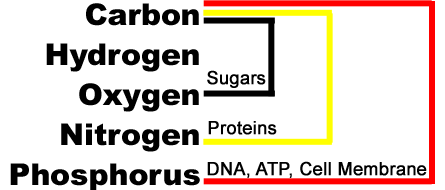
In terms of importance and quantity in the human body, phosphorus is the Fifth Element.
Commercialization of Dangerous Magic
I assume Hennig Brand was lucky to have cooler days when learning about his new discovery. There are later discussions from others about smearing glowing phosphorous on skin or clothing as an amusing decorative effect. But Brand discovered the dark-side of his luminous miracle when it spontaneously ignited in his hand, causing a bad injury. Brand was also well aware Hermes Trismegistus warned the Alchemist of needed "Secrecy," and for good reason.
Brand keep his discovery of white phosphorous secret for almost the next 10 years. I assume he thought it might provide an intermediate step toward producing gold. He finally sold non-exclusive process knowlege to someone who brought it to the attention of the "Privy Councilor" for Duke Friedrich of Brunswick-Lüneburg. The Duke had money to supply patronages to deserving "Projectors" i.e those who needed funding to pursue worthy projects. I think of the relation a bit like today's Entrepreneurs and Angel Investors. The Privy Councilor was the technical evaluator of the projects, and the gatekeeper of the funds. Hennig Brand met the Duke's Privy Councilor in July 1678 in Hamburg Germany, bringing a sample of the "miraculous bearer of light." A day later he was given a contract providing a monthly patronage. Who was this Councilor?

Gottfried Leibniz again? Seriously?
An Aside for the Reader...
Sometimes these articles seem to resemble a play or low budget movie where the same actors keep showing up in order to fund the smallest cast possible. So Leibniz shows up as the "Privy Councilor" too? We introduced him a few pages back because:
- He made a cool eight-sided diagram mapping Aristotelian Elements to Qualities
- He wrote "The Art of Combinations" which thematically relates to Comprisations
- He built a mechanical "Stepped Reckoner" computer
- He was accused by Issac Newton of stealing the idea for Calculus
- He supposedly dabbled in Alchemy
But now the same Leibniz is the writing a contract to reveal the actualized Philosophers' Stone?
Leibniz Describes the Discovery
As a consequence of the contract with Brand, Leibniz and staff were able to create white phosphorus in their own lab. From some of his correspondence it appears he thought the primary use would be large-scale bottled illumination. Light bulbs, essentially, before electricity and without burning any gas or oil. Reporting back to his Duke on the productivity of the Patronage, Leibniz used poetic language as he enthusiastically describes phosphorus:
"To explore the depths, the paths in the sea,
and what mysterious nature always kept greedily hidden in its bosom,
was only made possible by the thieving staff,
with which Prometheus brought us fire.
The flame of heaven sought to teach everything,
from ovens it brought us miracles.
But a fire like phosphorus has never been seen:
It is cold and can exist in water.
In water it loses its fiery glow,
Otherwise it would float away from earthly existence.
Then it looks like bright amber,
A stone from the mineral kingdom,
Otherwise phosphorus was unknown to nature.
A fire artist only recently discovered it.
You are destined to see a spectacle,
O prince, otherwise it would never have been discovered here on earth!
If the Persians worshipped this light as a god,
the Egyptians would never have ridiculed them;
For phosphorus with its eternal light
Corresponds to the perforated dome of stars.
The life force sought by the wise men of the world,
Which is often depicted on the graves of the ancients,
Is like phosphorus with its constant glow,
Which glows all alone without a Vestal Virgin.
Jeremiah's unquenchable sacrificial fire,
Found its likeness in the fire of phosphorus.
Anyone who does not know his nature better,
fears in the dark that he will burn."
— Gottfried Wilhelm Leibniz to Duke Johann Friedrich of Brunswick-Lüneburg
Prophetic Language
I certainly feel "beaten over the head" with terminology outlining the promises of the "Philosopher's Stone." If you take a hard-line on "Base metal into gold, or it didn't happen" you will have to wait for a later incarnation of the Philosopher's Stone (in the next, brief article "The Elements"). Otherwise, descriptions of what the Philosopher's Stone would be, and the descriptions of what Phosphorous is, match up. Keep in mind that the descriptions for over 2,000 years could not originate with observed Phosphorus, unless it had already been discovered. All the predictions could only have come from mystical revelation. On the other hand, could ancient Egyptians have made phosphorus and then hide the secret? Or did the process require 17th century technology?
Illustrations of the "alembic" and "retort" credit their use to Maria Hebraea (aka "Mary the Jewess"), who may have been practicing in first century Alexandria, Egypt. She was a notable Alchemist and a supposed teacher of Democritus. This would have placed her even 500 years earlier. So the timing is already over 2,000 years before Hennig Brand's discovery. Copper metallurgy dates another 5,000 before that. So the ability to produce suitable containers for distillation and the furnaces needed to heat them were highly available to "the Ancients." Did they have access to human urine back then? Yes they did!
So why would the process of distilling Phosphorus from urine be considered "forbidden knowledge?" A process that needed to be hidden in Occult Symbolism?
Because the process of distilling phosphorus is highly toxic, of least concern is the production of carbon monoxide. The end result seems glowy and friendly enough in a cooler climate. But on a normal hot day (>86 degrees) it spontaneously ignites and destroys flesh, clothing, or anything susceptible to fire. Perhaps even Newton's massive document fire in the 1680's (note the burnt document edges in the Banner Image!) came from playing with white phospohorus. The timing is perfect. Newton, of course, blamed the fire on his dog, Diamond.
A Star is Born
Hennig Brand never got rich selling his process for white phosphorus, and Leibniz never commercialized glowing phosphorus light bulbs. One of the lab assistants ended up wealthy by creating white phosphorous tipped matches. These evolved into today's "safety matches," utilizing red phosphorus to remove the original possibility of unexpected ignition.
Fire was the key to white phosphorus propagating in the modern world. The glow provided is insufficient to justify artificial illumination. Instead, within a few years white phosphorus became the favorite of arsonists and then the military. Phosphorous tipped bullets still serve as "tracers" and phosphorus found it's way into napalm.
Mixed with other elements phosphorus is truly an "elixir of life," especially critical to fertilizers that expand the food supply and feed the world. But on it's own, white phosphorus earned the nickname "the Devil's Element."
For over two thousand years "Phosphorus" was merely the name of the planet we call Venus and meant the "light-bringer" in Greek. "Lucifer" was the Roman name for the morning star, the exact same "light-bringer." The association of "Lucifer" with Christianty's Devil didn't happen until long after it's literal "light-bringer" usage. But by the time Brand was making his "Forbidden Discovery" in 1669 the name "Lucifer" had it's current association. He was clever to name it in Latin instead.
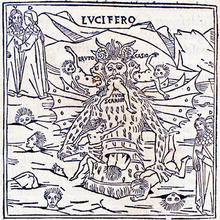
Illustration of Lucifer from Dante's Inferno, 1491
Apocalyptic Warning
One of the deadliest inventions of war has been the fire storm. Strategically detonated incendiaries create hellish fire-tornados over a thousand feet high and have killed more people than atomic bombs.
A romanticized, yet accurate, conclusion for this Magnum Opus could be:
Hennig Brand pursued a false promise of material wealth, despite warnings from the ancients. He burned the "golden water of life" until it produced white smoke, and consequently summoned Lucifer to Earth.
During Operation Gomorrah in World War II phosphorus incendiary bombs were used to create a fire storm and completely incinerate Hamburg Germany, the place where the "miraculous bearer of light" was first discovered.
Why would ancient Egyptians keep the process for making white phosphorus secret?
That would be why.
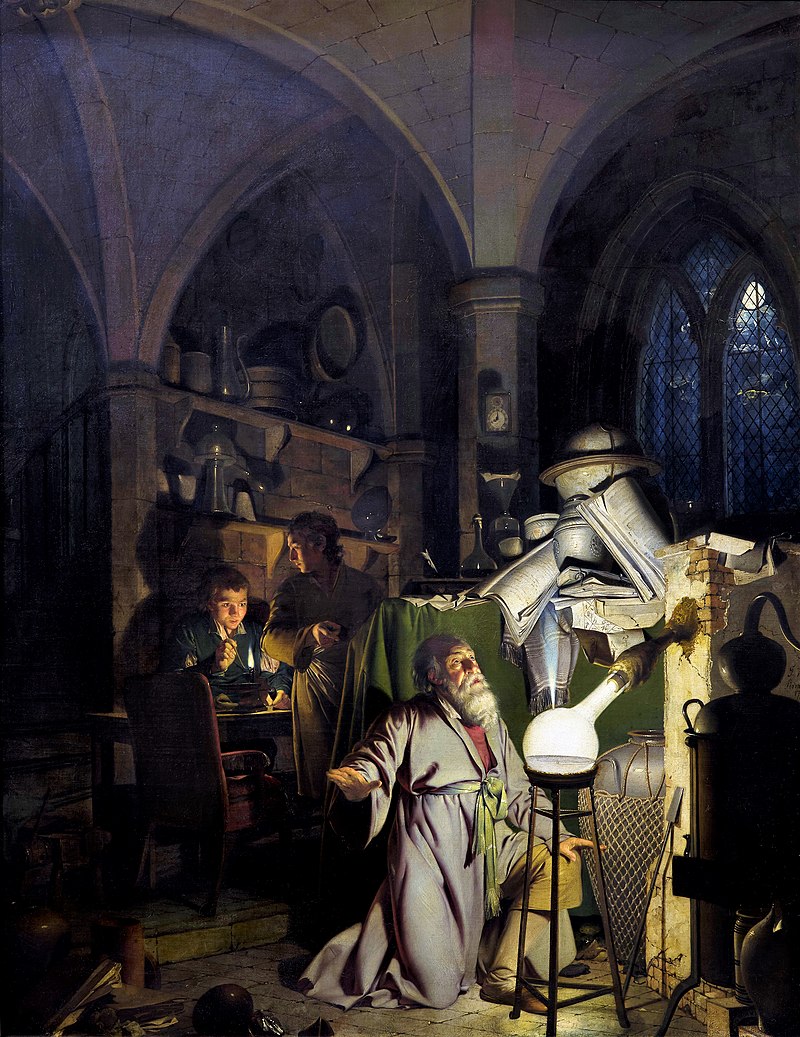
Joseph Wright, The Alchymist, in Search of the Philosopher's Stone, Discovers Phosphorus, 1771
The other articles in Boundaries of Objectivity will explore this further. You can leave thoughtful comments or questions at the link below.